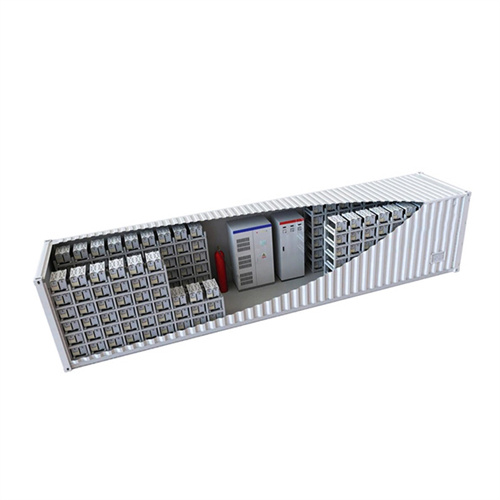Wherever there is wind there is electricity

Wherever there is a dynamic touch, there is electromagnetic field
Wherever there is a dynamic touch, there is electromagnetic field - a discovery for power generation Here we have found that all matters under forces can generate electromagnetic

What do we do about renewable energy when there is no wind
The rule of thumb is to electrify wherever possible. Clean hydrogen is precious. It will be needed for a long list of tasks with no alternative: replacing dirty hydrogen in industry,

Is electricity really the flow of electrons or is it more involved?
Electricity as found in domestic wiring has three main properties: its flow is measured in (electron) charges per second or amperes; its "pressure" in volts; and; the power

How Do Wind Turbines Work When It Is Not Windy?
In wind farms, there will be thousands of wind turbines generating power. The electricity generated is added to the grid for distribution. In a utility-scale power distribution network, wind energy is not the only energy source. Usually, the

Wind power: converting wind into electricity
WIND ENERGY: A FEW DEFINITIONS. A wind turbine is a machine used to convert kinetic energy from the wind into mechanical energy, in turn converted into electricity. When several wind turbines are installed on the same site, this

The Science of Wind Energy: How Turbines Convert Air
Harnessing the power of the wind, wind turbines have revolutionized electricity generation. But how do these colossal structures convert air into electricity? In this article, we will delve into the science behind wind energy and explore how

Wind power | Your questions answered | National Grid
Because electricity generation from natural sources like wind or solar energy can be intermittent, there are a variety of solutions for providing clean energy that doesn''t rely on the sun or wind. Find out how we''re making

Wherever there is matter, there is energy; all changes of matter
1 Wherever there is matter, there is energy; all changes of matter changes in the form of the energy.A.retainB cludeC volveD ntain 2 【题目】Wherev e rther ei smatter,ther ei

How is electricity generated using wind?
Every day, wind turbines capture the wind''s power and convert it into electricity. It''s a fairly simple process: When the wind blows the turbine''s blades spin, capturing energy – this energy is then sent through a gearbox to a generator,

The Science of Wind Energy: How Turbines Convert Air into Electricity
Environmental Benefits of Wind Energy. Wind energy is not only a renewable resource but also a clean one. Unlike fossil fuels, wind power generation produces no greenhouse gas emissions

SeaTwirl enables floating wind power wherever it is needed
SeaTwirl enables floating wind power wherever it is needed Wind power is an endless source of renewable and clean energy. As land and shallow waters are facing increasing challenges

John 3:8 Sermons: The wind blows where it wants to, and you
Nor is there anything which men more need, or aught so much to desire to be true and accept so willingly as this doctrine that there is a Divine power which wakes up the better part of man''s

6 FAQs about [Wherever there is wind there is electricity]
What is the science behind wind energy?
The science behind wind energy is a testament to human ingenuity and the power of nature. Wind turbines are a remarkable technology that efficiently converts the kinetic energy of moving air into electricity, providing a sustainable and clean source of power for our modern world.
How does wind energy work?
Wind turbines work by capturing the energy of moving air with blades, converting it into rotational motion, and ultimately into electricity. What are the environmental benefits of wind energy? Wind energy is clean and produces no greenhouse gases, making it an eco-friendly alternative to fossil fuels.
How do scientists use wind energy to generate electricity?
Scientists and engineers are using energy from the wind to generate electricity. Wind energy, or wind power, is created using a wind turbine. As renewable energy technology continues to advance and grow in popularity, wind farms like this one have become an increasingly common sight along hills, fields, or even offshore in the ocean.
Where did wind power come from?
The first wind turbines used to produce electricity date back to the 1970s. In France today, wind power is the second most used renewable energy source behind hydropower. It supplies more than 8% of national electricity requirements (8,3% in 2022, that is 37.9 TWh). In France, wind power supplies more than 8% of national electricity requirements.
How does a wind turbine generate electricity?
Wind energy, or wind power, is created using a wind turbine, a device that channels the power of the wind to generate electricity. The wind blows the blades of the turbine, which are attached to a rotor. The rotor then spins a generator to create electricity.
How is wind energy derived from kinetic energy?
At its core, wind energy is derived from the kinetic energy of moving air. When the wind blows, it carries with it a significant amount of energy due to the motion of air molecules. This kinetic energy can be harnessed and converted into electricity through the use of wind turbines.
Related Contents
- Techniques for generating electricity without wind
- Wind turbine group electricity sales and generation
- How does wind generate electricity
- Can wind cannons generate electricity
- How much electricity does wind power generate in one cycle
- Wind blades that can generate electricity even with a breeze
- Can wind generate electricity from the sun
- Where is the electricity generated by wind power used
- Can wind hoists generate electricity
- How many watts of electricity does a wind turbine generate in a day
- How many tons of electricity does the wind power project generate annually
- Each unit of Datang Wind Power generates electricity per hour